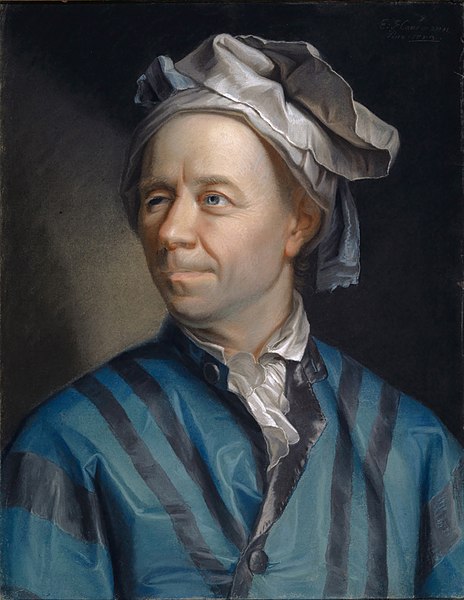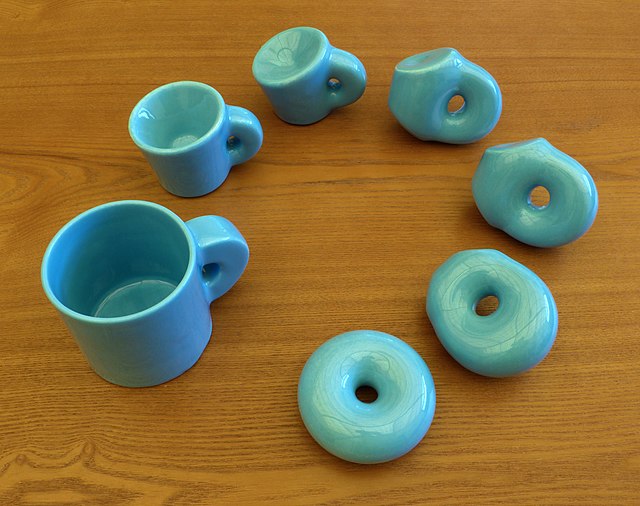Leonhard Euler was a Swiss mathematician, physicist, astronomer, geographer, logician, and engineer who founded the studies of graph theory and topology and made pioneering and influential discoveries in many other branches of mathematics such as analytic number theory, complex analysis, and infinitesimal calculus. He introduced much of modern mathematical terminology and notation, including the notion of a mathematical function. He is also known for his work in mechanics, fluid dynamics, optics, astronomy, and music theory.
Portrait by Jakob Emanuel Handmann, 1753
1957 Soviet Union stamp commemorating the 250th birthday of Euler. The text says: 250 years from the birth of the great mathematician, academician Leonhard Euler.
Euler's grave at the Alexander Nevsky Monastery
Euler portrait on the sixth series of the 10 Franc banknote
Topology is the part of mathematics concerned with the properties of a geometric object that are preserved under continuous deformations, such as stretching, twisting, crumpling, and bending; that is, without closing holes, opening holes, tearing, gluing, or passing through itself.
Möbius strips, which have only one surface and one edge, are a kind of object studied in topology.
A continuous transformation can turn a coffee mug into a donut. Ceramic model by Keenan Crane and Henry Segerman.






